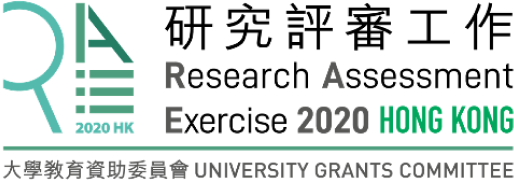Unit of Assessment:
Research categories:
?Computer Science
Computer Science, Information Systems (1)
Mathematical & Computational Biology (1)
Economics & Business
Management (1)
Engineering
Information Science & Library Science (1)
Case Study
Artificial intelligence enabled smart healthcare
1. Summary of the impact
Over the past decade, healthcare providers have been investing substantially in healthcare technologies to improve patient care. However, these huge investments are often used to establish software and infrastructure instead of incorporating cutting-edge technologies into patient care services. The opportunity cost of this is the forgoing of improved care quality, especially in terms of efficiency, efficacy, and flexibility. This case study explains how the advance intelligent information systems research center (ATIS) of City University of Hong Kong (1) employ artificial intelligence (AI) technologies to address key healthcare issues; (2) provide a comprehensive AI-enabled framework for healthcare providers to improve efficiency, efficacy, and flexibility of care.
2. Underpinning research
The impact of AI-enabled smart healthcare is underpinned by the following three key grants:
(1) 2018 Integrated-care platform for elderly under long-term residential care Internal grant of City University of Hong Kong, HKD600,000
(2) 2018 The establishment of structured image data library and research of artificial intelligent diagnosis algorithm for cancer, Hong Kong-Guangzhou Technology and Innovation Partnership Program, RMB2,000,000
(3) Key technology research on embryo morphological selection, Sichuan Science and Technology Plan, project no. 2019YFSY0047, Collaborator, RMB200,000, 2019.1.30-2022.1.29
Specifically, the three research themes are as follows.
(1) Use of AI in building an integrated smart healthcare platform for the Hong Kong Elderly Community
In recent years, Hong Kong citizens have enjoyed the longest life expectancy in the world. It is projected that the number of elderly aged 65 and above in Hong Kong will increase from 1.27 million in 2018 to 2.45 million in 2038, about 30% of the total population. The elderly population generally requires more access to medical services, which would definitely put pressure on healthcare management. The aging population has aroused particular social concerns related to inefficient elderly healthcare management and the increasing healthcare manpower requirement.
The object of this project is to develop an intelligent community elderly healthcare platform and a corresponding mobile application in Hong Kong, which integrates smart devices and applications of assistive technologies for the management of treatment, fitness, as well as medication. It could also assist healthcare professionals, the elderly and their families in monitoring recent health conditions. Through pre-emptive and responsive intervention, potential symptoms can be identified and proper treatment can be arranged in a timely manner, which would effectively improve the quality of medical services.
The intelligent community elderly integrated-care platform to be developed would firstly focus on four pervasive health-related problems including falling, arrhythmia, dementia, and influenza.
(2) Use of AI in Providing Cancer Diagnosing Support
Liver cancer is one of the common malignant cancers. Worldwide speaking, it is estimated that more than 50% of new liver cancer cases or resulting deaths occurs in China. Statistics shows that the rate of liver cancer growth is 5% per year. A very important factor in the persistently high mortality of liver cancer is that it is difficult to find liver cancer in general physical examinations, and early diagnosis is often missed.
Therefore, early diagnosis of liver cancer is particularly critical. Medical imaging examination is a vital method, but in China, the annual growth rate of radiologists is only 4.1%, which is far lower than the increase in the number of imaging examinations, which has created a huge gap. It means that the workload of physicians will increase greatly, and the accuracy of diagnoses will be reduced accordingly.
AI is used in medical image recognition, which is fast and efficient, and can identify multiple groups of images in batches. In addition, the advent of artificial intelligence-assisted image recognition systems can make image reading easier and more convenient, and medical institutions can distinguish images remotely, greatly saving manpower and resources.
(3) Use of AI in Enhancing Assisted Human Reproduction and
Approximately one-sixth of couples worldwide experience problems in infertility. Intrauterine insemination (IUI) and in vitro fertilization (IVF) are the main assisted reproductive technologies (ARTs) used to increase pregnancy rates, even though their effectiveness remains unsatisfactory. In 2016, IUI and IVF achieved 11.5% and 14.3% effectiveness, respectively. The quality of semen and embryo directly influences the success rate of ARTs. Therefore, morphological analysis and genetic screening are key procedures in selecting high-quality semen and embryo.
AI can overcome various challenges, such as subjective selection, expertise dependence, and unclear standards of manual selection. In this project, we aim to introduce deep learning to human reproduction in three major tasks: (1) semen selection, (2) embryo morphological selection, and (3) embryo gene analytics. We also provide important managerial, operational, and technical insights and implications (e.g., Cao et al., 2018; Liao et al., 2018 under key grant 3).
3. References to the research
2018 Liao, S.S., Wang, P., Chen. Y., Liu, Y., Ma, X., “Deep Learning on Abnormal Chromosome Segments: An Intelligent Copy Number Variants Detection System Design”, International Conference on Information Resources Management.
2018 Xu, Y., Tong, Y., Liao, S.S., Zhou, G. and Yu, Y., “Understanding indirect system use of junior employees in the context of healthcare”, Information & Management.
2018 Cao, Q., Liao, S.S., Meng, X., Ye, H., Yan, Z. and Wang, P., “Identification of Viable Embryos Using Deep Learning for Medical Image”, In Proceedings of the 2018 5th International Conference on Bioinformatics Research and Applications (ICBRA ’18). Association for Computing Machinery, New York, NY, USA, 69-72. DOI: https://doi.org/10.1145/3309129.3309143
4. Details of the impact
In the past decade, technologies powered by AI have made remarkable contributions to the transition and revolution of different industries including healthcare. As a participant in developing AI-enabled technologies, from a broad to a narrowed view, our impacts can be delineated as follows.
Generally, our elaboration of AI healthcare technologies accords with national policy-makers developmental strategies. In May 2016, Chinese government issued a 3-year implementation plan for Internet and AI and stated the need to advance the development of AI industries [e]. Later in 2017, another plan called “Three-year Action Plan to Promote the Development of a New Generation of Artificial Intelligence Industries (2018-2020)” was enacted [f], which gave concrete objectives and requirements for AI-enabled projects. Healthcare projects such as robot and medical image processing were key state-level ones to be gradually focused. Our developing technologies are the very ones to accelerate the paces of those AI-enabled healthcare industries.
For example, our key grant 2 and key grant 3 aim to develop cancer image and embryo image processing technologies to address these important, difficult and practical issues in the relevant field. In the current practice, cancer diagnosing relies on medical image (e.g., CT image and MRI image) analysis and it is very time-consuming for radiologists to assess all images immediately. Automatic diagnosing algorithms leverage the advantages of AI to provide decision-making support, reduce medical expenses and improve the effectiveness of manpower, the service quality of healthcare, the success rate of clinical pregnancies. Manual morphological analysis of embryo image has many deficiencies, e.g., subjectivity, high time cost, unsolved challenges. Our grant 3 captures these both technical, operational and managerial needs to process embryo from the perspective of AI (Cao et al., 2018). Besides, fine-grained and high-level granularity data are critical to develop AI technologies. Our grants prompt the cooperative organizations or firms [a,d] to make innovative transformations in terms of data storage and data analysis. Hence, our projects can trigger and enhance the organizations and firms with transformative power to make more AI-related innovations from data preparation. As for managerial benefit, AI-enabled management systems are superior to traditional ones because of the quick response. Quick response is a competitive advantage and it create much business value in improving the degree of consumer satisfaction.
In our key grant 1, we empower the previous elderly healthcare system with more advantages by adding smart medical device and real-time diagnosing algorithms. For medical device developers, they gain more business profits from these AI-enabled functions. For medical personnel and care-givers, our smart healthcare platform facilitates their routine work and even improve the health outcomes of their cares. In Hong Kong, Hong Kong Government attaches much attention to healthcare investment and severe aging problem [g]. Our key grant 1 can address the social need to initiate these new applicable technologies. Furthermore, key grant 1 can relieve some social pressure, improve the well-being and quality-of-life for the stakeholders. And for policy-makers, they can be given more insights on how to guide the development of AI-healthcare quality based on our research findings (Xu et al., 2018).
In addition to the three aforementioned granted projects, other two research work concerning semen selection [b,c,d] and embryo gene analytics [d] have also been initiated. We plan to use AI technology to benefit the infertile couples in the vitro fertilization (IVF) area. The application of AI in the in vitro fertilization (IVF) area is initially determined by focusing on the intelligent selection of embryos, genes, and sperm, with the following impacts. About abnormal gene diagnosing and selection, a key research (Liao et al., 2018) discusses an innovative application which utilizes deep-learning based algorithm to handle gene sequencing data. Semen analysis is more challenging than other tasks because of dynamics and complex procedures. However, we have made some initial progress such as head extraction, body 3D feature extraction. Due to the uniqueness of our IVF-related projects, it contains huge practical value for our next generation, for which we chase. It is meaningful for the whole society if the overall IVF success rate can be improved to a satisfying level. Meanwhile, our projects can create much business value as well, because few institutes have been capable to undertake the IVF tasks as us. Key collaborations with reproductive organizations and third-party firms allow us to express these potential impacts in the future.
Lastly, our projects and research can give impact in the academic field. Firstly, Intelligent Community Elders Healthcare can integrate data collection, disease detection/prediction, disease management, and intelligent diagnosis. Various data processing strategies will be developed to handle new data. Secondly, limited knowledge is available about the causal relationship between genes’ copy number variation (CNV) and genetic diseases. Associated knowledge discovery is a vital task. AI can contribute considerably more in achieving this task compared to traditional machine learning techniques due to the difference in the handcrafted feature learning and learning ‘all of the things’. Thirdly, the morphological analysis of the embryo remains a generally subjective process without a widely accepted standard. AI can guide a result-oriented technology implementation, which overcomes the main problems of the current subjective approach. Fourthly, AI will help improve the current computer-aided sperm analysis (CASA) system in clinical practice from the perspectives of morphology, dynamics, and concentration.
5. Sources to corroborate the impact
a) Letter from Chief Physician and Director of Chengdu Jinjiang CSIVF, Zhongying
b) Letter from Chief Physician and Director of Reproductive Center, First Affiliated Hospital of Wenzhou Medical University, Huangxuefeng
c) Letter from Professor Jiang Yuqiang, Institute of Genetics and Developmental Biology, Chinese Academy of Science
d) Letter from Darui biotechnology
e) Chinese Government: A Three-Year Implementation Plan for Internet + Artificial Intelligence, May 2016 http://www.miit.gov.cn/n1146290/n1146392/c4808445/part/4808453.pdf
f) Chinese Government: Three-year Action Plan to Promote the Development of a New Generation of Artificial Intelligence Industries (2018-2020), Dec. 2017 http://www.miit.gov.cn/n1146295/n1652858/n1652930/n3757016/c5960820/content.html
g) Population ageing trend of Hong Kong report, Jan. 2019 https://www.hkeconomy.gov.hk/en/pdf/el/el-2019-02.pdf

